
Roots
In the vast expanse of human experience, where the sun’s embrace met the earth’s varied terrain, textured hair emerged as a crown of remarkable resilience. It is a heritage etched in strands, a living chronicle of ancestral ingenuity. For those with coils, kinks, and waves, the hair upon the head is seldom just a collection of fibers.
It holds memory, spirit, and a deep connection to the lands from which humanity first breathed. Our inquiry into how ancestral practices enhanced textured hair’s sun protection is a reverent look at this profound inheritance, observing how ancient wisdom, often born of necessity and intimacy with nature, crafted a shield for the very source of thought and identity.

What is the Inherent Sun Protection of Textured Hair?
The very structure of textured hair speaks to its ancient origins under the intense solar glow of Africa. Unlike straight or wavy hair, coiled strands grow in a repeating pattern of tight twists and sharp folds. This unique architecture, with its flattened cross-section, results in a natural density that appears to offer more coverage than its straighter counterparts. Evolutionary biologists suggest that this tight coiling may have developed as an adaptive response to the powerful ultraviolet radiation in Africa, where early humans lived and spent extensive periods outdoors.
The relatively sparse density of such hair, coupled with its elastic helix shape, creates an airy effect around the scalp. This allows for increased circulation of cooling air, which helps regulate body temperature, a vital function for hominids on the open savanna. Essentially, textured hair functions as a built-in sun helmet, diffusing and reflecting sunlight, reducing heat gain, and thereby aiding in brain protection by keeping the head cooler (Lasisi et al. 2023).
This intrinsic design serves as a powerful testament to the body’s innate capacity for self-preservation in challenging environments. The melanin within textured hair, particularly eumelanin, also plays a photoprotective role, absorbing and dissipating UV rays and guarding against cellular harm. Dark hair, with its greater eumelanin concentration, exhibits enhanced resistance to UV damage compared to lighter hair. This internal shield, a gift of our earliest ancestors, forms the elemental basis of textured hair’s sun resilience.
The natural configuration of textured hair and its melanin content offer an intrinsic layer of sun defense, a biological legacy from environments where intense solar exposure was a daily reality.

How Did Ancient Societies Speak of Hair’s Sun Resilience?
The understanding of hair’s protective qualities in ancient societies was not always articulated through modern scientific terms, yet it was deeply understood through observation and cultural practice. Hair was often perceived as an extension of one’s spirit, a conduit for energy and connection to ancestral realms. In many African traditions, the very act of caring for hair was intertwined with spiritual protection and energetic sovereignty.
The long, flowing hair worn by Lakota people, for instance, was seen as a physical extension of the spirit, growing with one’s spiritual connection and acting as a source of protection and healing (LaPointe, 2020). While not directly about sun protection, this holistic view underscores a recognition of hair’s role in overall well-being, which inherently included protection from elements.
Across diverse cultures, the appearance and care of hair often conveyed status, age, and spiritual significance. In Ancient Egypt, wigs were worn not only as symbols of rank and social class but also to protect hairless heads from the sun and insects. This practical application, alongside its aesthetic and symbolic value, indicates an awareness of hair’s shielding capacity.
Communities in ancient West Africa, for example, would style hair based on status and story, and these styles often provided physical coverage. The knowledge of how hair could be manipulated, oiled, and adorned to withstand environmental pressures was a living wisdom, passed down through generations, often without the need for formalized scientific nomenclature.
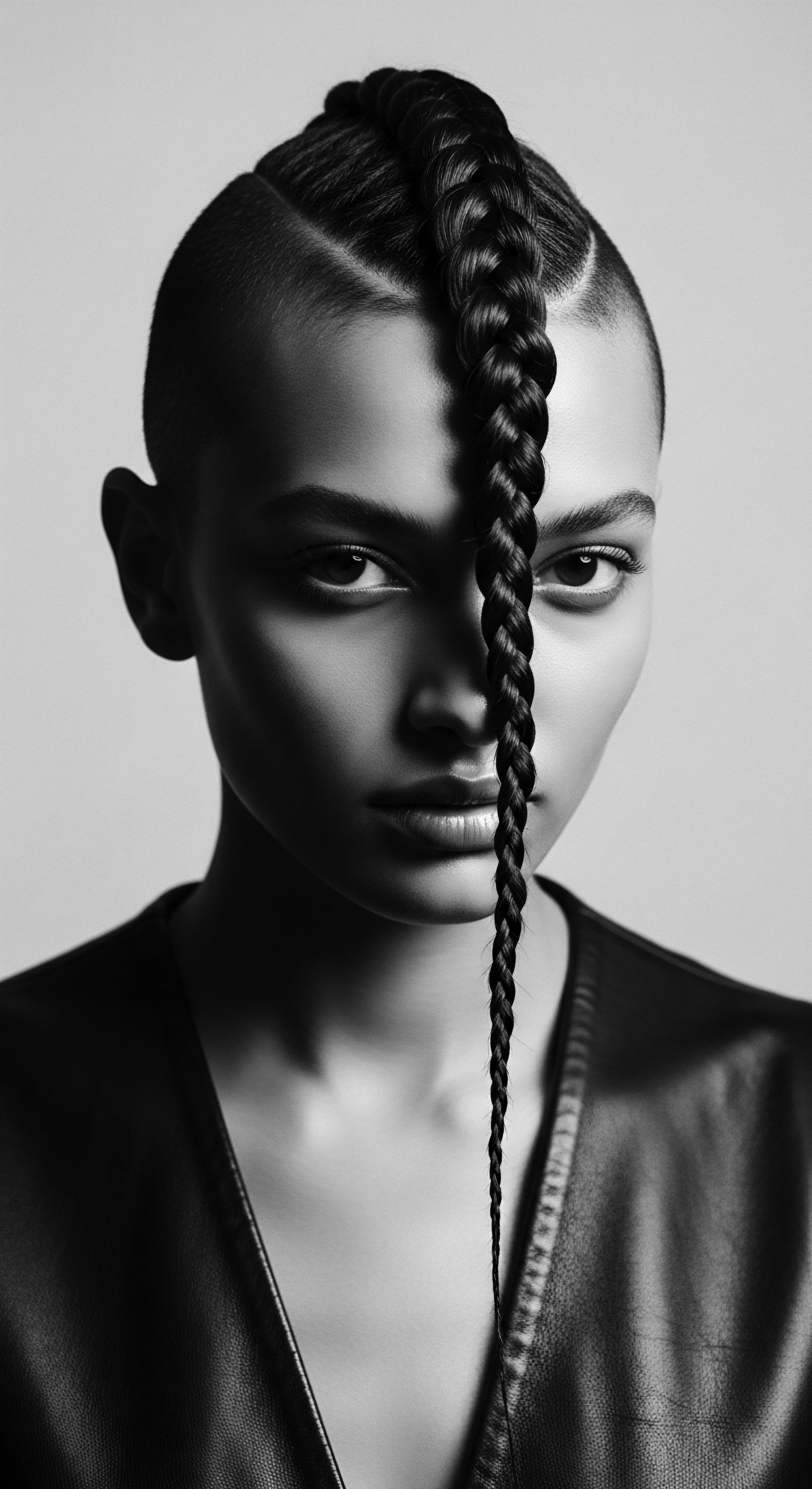
Ritual
The narrative of textured hair’s resilience under the sun is not solely a story of inherent biological design; it is equally a testament to the purposeful rituals and ingenious styling techniques crafted by ancestral hands. These practices, honed over millennia, represent a profound dialogue between human creativity and the demands of the natural world. They transformed mere strands into dynamic works of art, offering both physical protection and cultural expression. The heritage of these rituals speaks to a deep connection to land, community, and the persistent ingenuity of Black and mixed-race peoples.
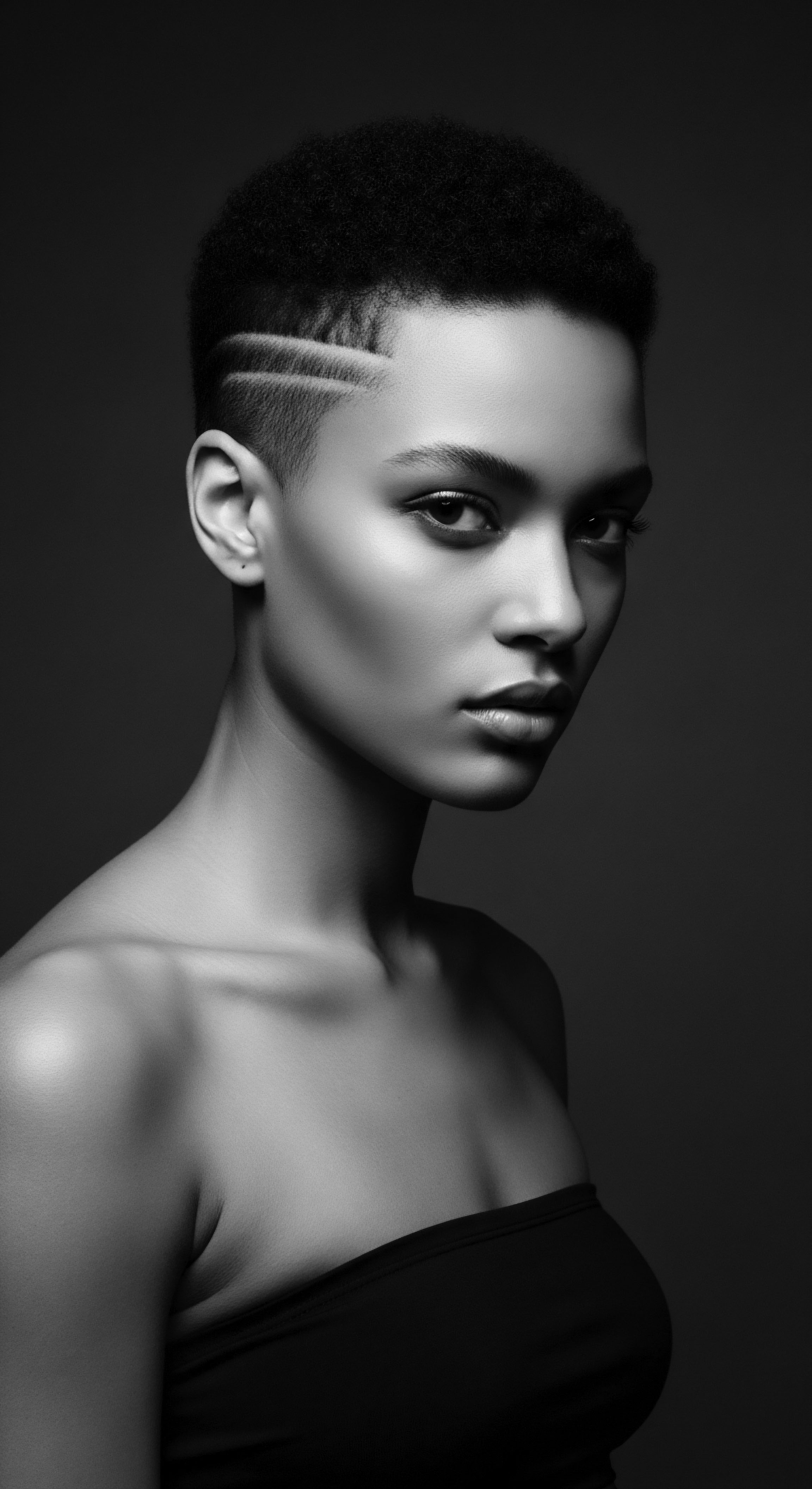
What Traditional Styles Shielded Hair from the Sun?
Protective styles, a cornerstone of textured hair care, have roots extending deep into antiquity, serving as effective barriers against environmental aggressors, including intense solar radiation. In ancient African societies, cornrows, braids, and various forms of threading were not simply aesthetic choices. These styles were pragmatic solutions for daily life, designed to safeguard the hair and scalp from long hours under the sun. The intricate patterns of cornrows, often likened to agricultural fields, could signify communal identity, age, or marital status, while simultaneously offering a compact, shielded arrangement for the hair.
During the transatlantic slave trade, enslaved people continued to utilize cornrows and other intricate styles for protection during long, arduous hours of labor under the sun. This enduring practice illustrates the adaptive cultural intelligence that maintained hair health even in the direst of circumstances.
The Himba people of Namibia offer a vivid historical example of ritualized sun protection. They traditionally coat their hair and skin with Otjize, a distinctive mixture of butterfat and red ochre. This paste, with its rich reddish hue, serves a dual purpose ❉ it offers significant protection against the sun’s harsh rays and aids in detangling the hair. The systematic application of otjize is a daily practice, embodying a blend of cosmetic adornment, cultural identity, and environmental adaptation that has been passed down through generations.
- Cornrows ❉ Intricate braids lying close to the scalp, providing a compact barrier.
- Braids ❉ Various forms, from single plaits to complex systems, reducing direct sun exposure.
- Threading ❉ Sections of hair wrapped tightly with flexible threads, common among the Yoruba people, functioning as a protective style and a natural hair straightener.

How Did Head Coverings Contribute to Hair Protection?
Head coverings, particularly headwraps, represent a crucial aspect of ancestral sun protection for textured hair, holding profound historical and cultural weight. Originating in Sub-Saharan Africa as early as the 18th century, and possibly much earlier (3000 BCE in ancient African, Middle Eastern, and Asian societies) these garments were far more than decorative accessories. They were practical necessities, shielding wearers from the sun’s direct glare, dust, and wind in arid climates. The use of headwraps was widespread among Nubian queens in Egypt and later across various African communities, where their specific colors, patterns, and tying styles conveyed intricate messages about a woman’s culture, family practices, marital status, and social standing.
During the period of slavery in the United States, headwraps acquired a complex symbolism. While often imposed by white enslavers as a marker of subservience, Black women reclaimed these cloths, transforming them into symbols of resistance, dignity, and cultural identity. The simple head rag became a uniform of communal identity, and its elaborate forms a declaration of freedom.
This historical context underscores the adaptability and resilience inherent in the practice, where a means of protection against the sun also became a profound expression of self and heritage in the face of oppression. Even today, headwraps are worn to celebrate African heritage, to protect heatless styles, and to preserve moisture.
| Historical Period/Context Ancient African Societies (e.g. Nubian Queens) |
| Protective Function Shielded from harsh sun, dust, wind. |
| Cultural or Social Significance Indicated status, royalty, and wealth. |
| Historical Period/Context Transatlantic Slavery Era |
| Protective Function Covered hair from sun during field labor; concealed damage. |
| Cultural or Social Significance Initially imposed as subservience, later reclaimed as symbols of resistance and cultural identity (Byrd and Tharps, 2001). |
| Historical Period/Context Traditional African Communities (e.g. West Africa) |
| Protective Function Guarded against environmental elements. |
| Cultural or Social Significance Conveyed marital status, age, spirituality, or community affiliation. |
| Historical Period/Context Head coverings consistently merged practical protection with profound cultural expression through generations. |
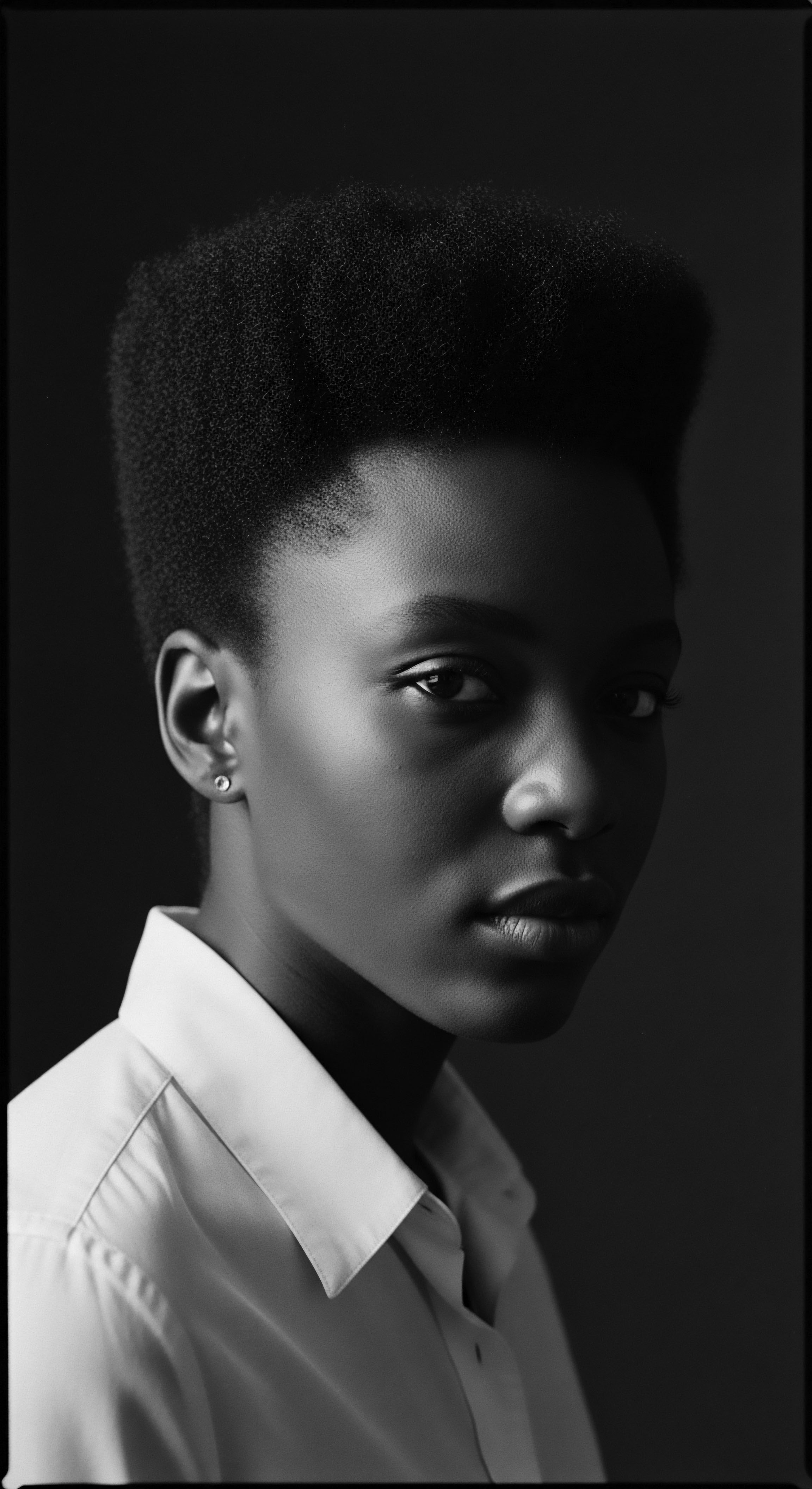
Relay
The wisdom of ancestral hair care, particularly concerning sun protection, lives on not merely as historical artifact but as a dynamic, evolving body of knowledge. It is a relay of insight, passed from generation to generation, often validating ancient practices through the lens of modern scientific understanding. This ongoing exchange enriches our appreciation for the resourcefulness of those who came before us, connecting elemental biology with inherited wisdom, fostering well-being through a heritage-informed approach to textured hair care.
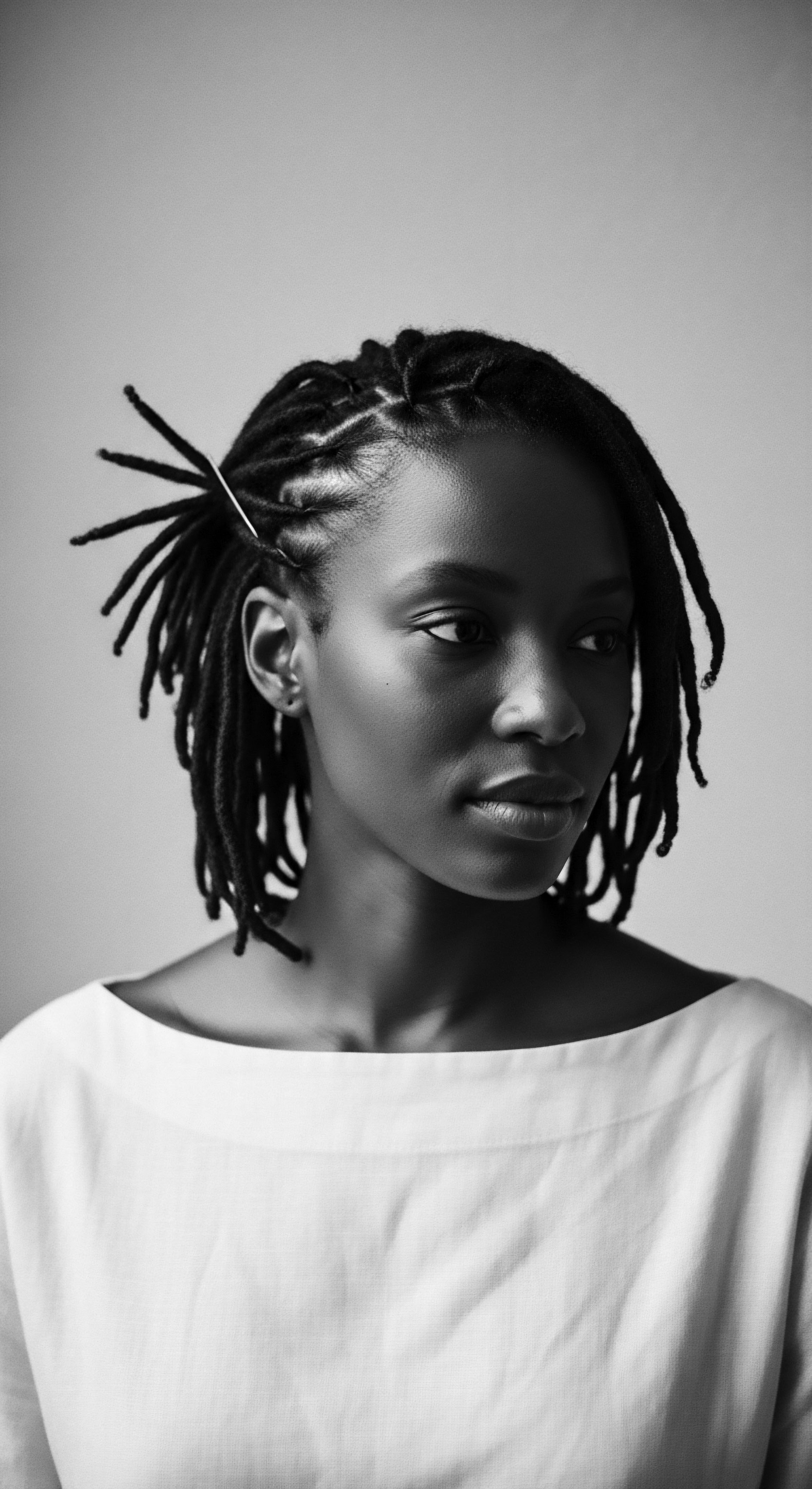
How do Traditional Ingredients Offer Sun Protection?
Ancestral communities across Africa and the diaspora intuitively understood the protective qualities of natural ingredients, long before the advent of modern UV filters. These ingredients, often plant-based, offered a shield against solar radiation while simultaneously nourishing the hair. The application of such substances was a ritual, a careful layering of nature’s bounty onto the scalp and strands.
Shea Butter, sourced from the karite tree in West Africa, has been a staple for centuries, recognized for its ability to moisturize skin and hair. Beyond its conditioning benefits, shea butter contains vitamins A, E, and F, offering natural UV protection. Its rich fatty acid composition aids in creating a barrier, safeguarding hair from the sun’s drying effects and environmental damage. Women in Chad, for instance, mixed shea butter with other substances, applying it to moisturized hair and then braiding it to seal in hydration and maintain protection.
Another powerful example comes from the South Pacific ❉ Monoï De Tahiti. This traditional preparation involves macerating tiare flowers in coconut oil. Coconut oil itself provides mild UV protection (around SPF 8) and helps seal moisture into hair strands, minimizing protein loss caused by sun exposure.
Monoï, with its high fatty acid content, nourishes the skin and guards against dehydration from sun exposure. Similarly, Tamanu Oil, sourced from a mystical tree in Oceanic landscapes, forms a film on the hair’s surface, maintaining the integrity of the hydrolipidic film and fighting moisture loss when exposed to the sun.
The Himba people’s Otjize, a mixture of butterfat and ochre, serves as a comprehensive sun shield, particularly against the intense UV radiation of the Namibian sun. The ochre, a mineral pigment, physically blocks sunlight, while the butterfat provides a conditioning base, preventing dryness. This blend represents a sophisticated ancestral understanding of physical and emollient barriers against solar harm.
- Shea Butter ❉ A West African staple, provides natural UV protection through its vitamin content and emollient barrier.
- Red Palm Oil ❉ Used in Central and West Africa, offers anti-aging benefits and sun protection, rich in beta-carotene and antioxidants.
- Argan Oil ❉ From North Africa, contains antioxidants and Vitamin E, aiding in UV defense.
- Aloe Vera Gel ❉ Utilized in Latin America and other regions, serves as a natural moisturizer and UV protector with enzymes and amino acids.
- Raspberry Seed Oil ❉ Offers substantial UV protection (SPF 28-50 for UVB) and antioxidants, although its traditional use specific to textured hair requires deeper historical documentation.
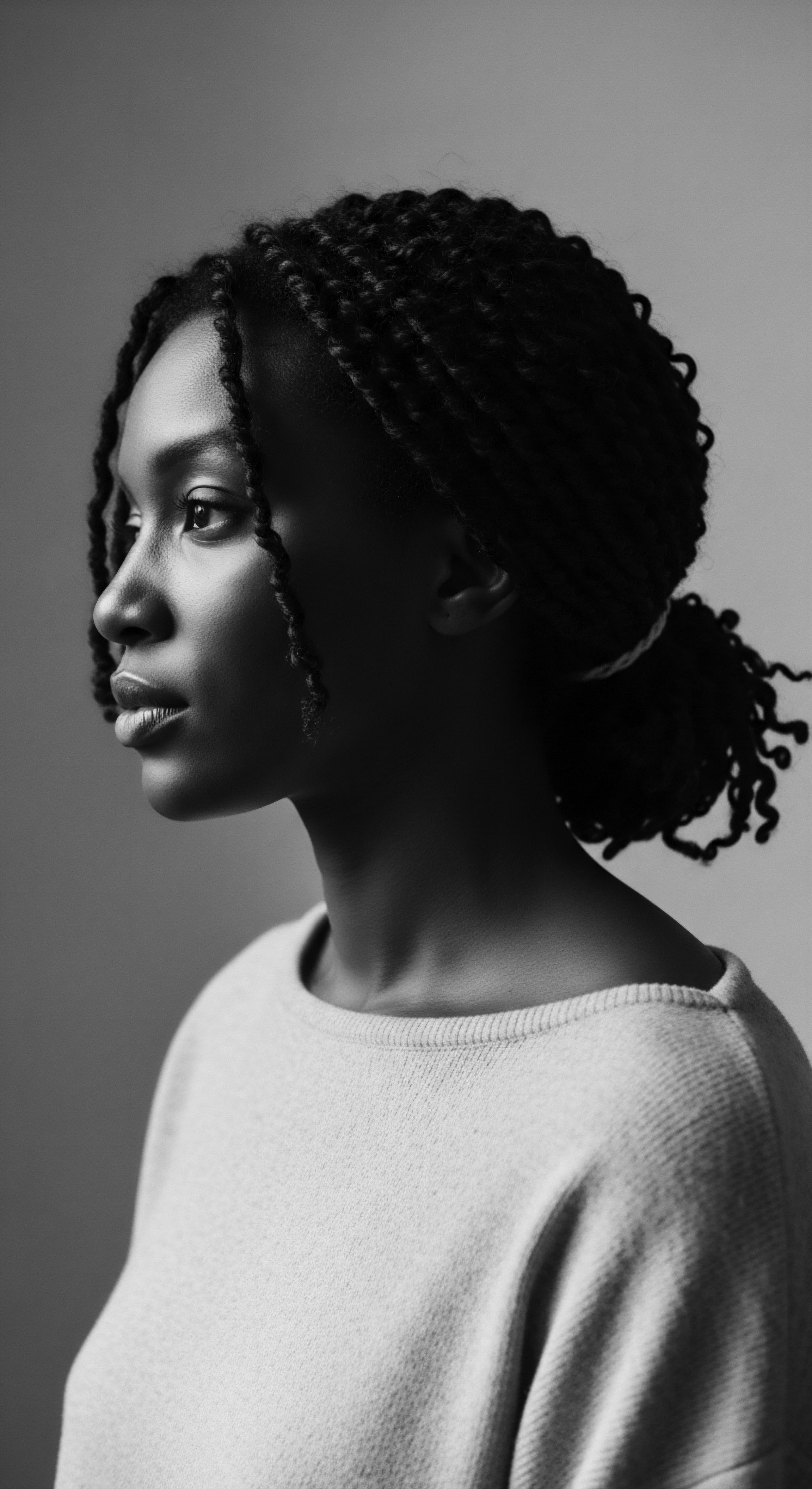
How does Modern Science Affirm Ancestral Care for Sun Protection?
Modern scientific inquiry increasingly corroborates the intuitive wisdom embedded in ancestral hair practices, particularly concerning sun protection. The understanding of melanin’s role in absorbing and dissipating harmful UV rays is a prime example. Darker hair, possessing a higher concentration of eumelanin, is more resistant to UV-induced damage and structural degradation than lighter hair. This scientific observation aligns with the evolutionary theory that tightly coiled, dark hair developed as a natural adaptation to intense solar radiation in ancestral African environments.
Furthermore, contemporary research on natural oils reinforces the efficacy of ancestral applications. Oils like coconut, argan, and avocado, long used in traditional hair care, are now known to offer mild UV protection due to their fatty acid composition and antioxidant properties. For instance, a 2000 Canadian study noted the potential of raspberry seed oil for broad-spectrum UV protection, demonstrating its ancestral botanical uses can be scientifically quantified.
These oils not only create a physical barrier on the hair shaft but also provide antioxidant support, helping to neutralize reactive oxygen species formed by UV exposure that can lead to protein and lipid damage within the hair. The long-standing practice of oiling the hair, thus, was a sophisticated, if unwritten, form of photoprotection.
The practice of covering hair with physical barriers, such as headwraps, also stands validated by modern understanding of UV radiation. Direct physical blockage remains one of the most effective ways to prevent sun damage to both hair and scalp. The cultural legacy of head coverings, as seen across the African diaspora, provided an immediate, tangible shield against the sun’s relentless presence, a simple yet powerful act of self-preservation that science affirms today.
Ancestral practices for sun protection, from specialized styling to the generous application of plant-based remedies, reflect a sophisticated ecological understanding that modern science increasingly verifies.
Consider the case of the Chadian Bassara/Baggara Arab Women and their use of Chébé Powder. While Chébé itself does not directly offer UV protection, its customary application often involves mixing it with moisturizing substances such as shea butter. After hydration, hair is braided, essentially creating a sealed, protected environment for the strands. This layering of emollient ingredients, followed by a protective style, showcases a comprehensive strategy to maintain hair health and length retention in harsh, sunny climates.
The focus was on overall hair integrity, which implicitly included resilience against environmental stressors like sun exposure. This holistic approach, integrating botanical agents with strategic styling, resonates with contemporary understanding of comprehensive hair health. (Obscure Histories, 2024).
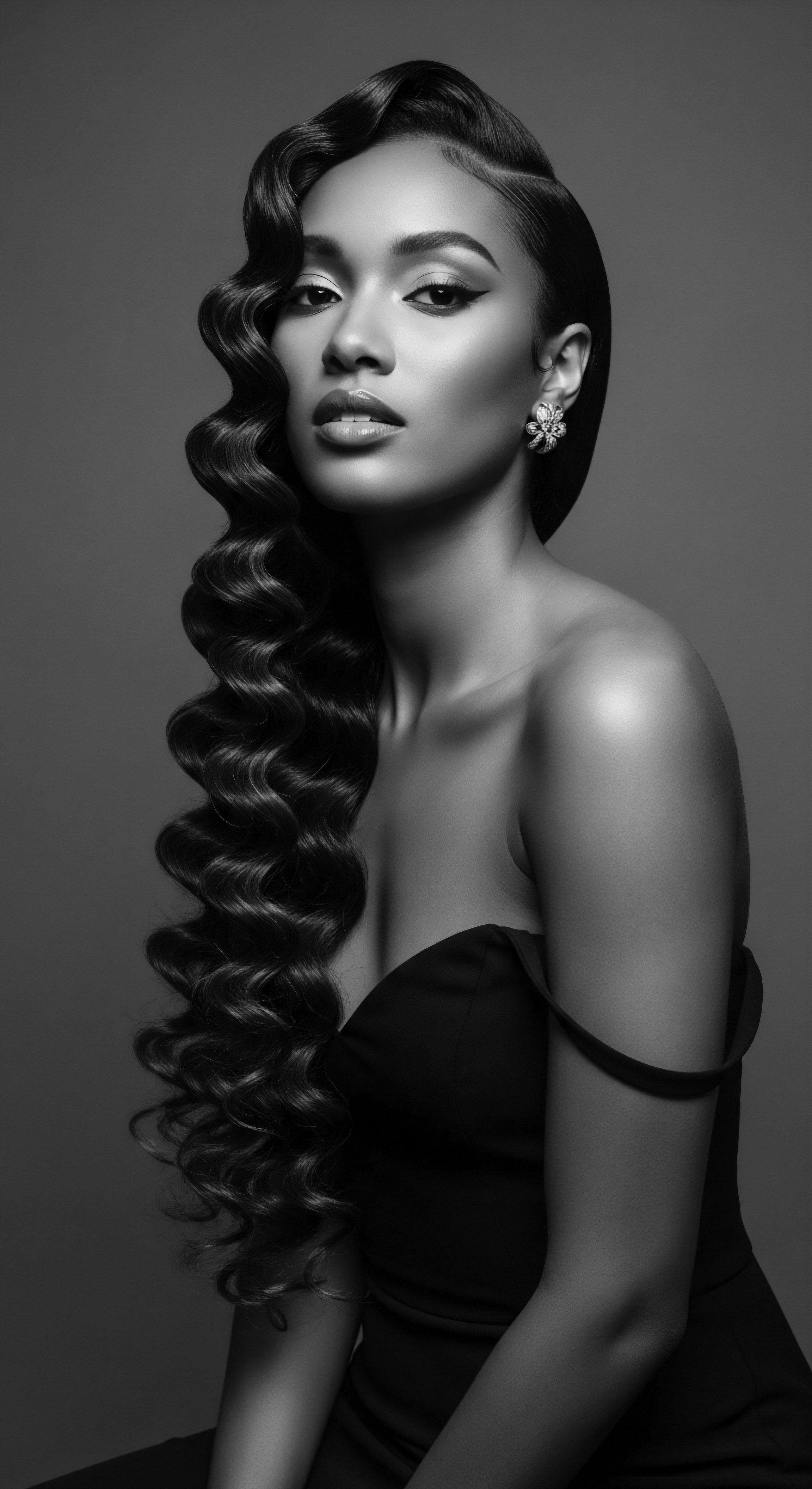
What Holistic Perspectives Guided Ancestral Sun Care?
Ancestral sun care for textured hair often stemmed from a holistic worldview, where well-being of the individual was intricately connected to their environment, community, and spiritual life. Hair was perceived not in isolation, but as an integral part of the body and spirit, demanding respectful, intentional care. This approach meant that protecting hair from the sun was part of a larger regimen of nurturing one’s entire being.
Traditional African and Indigenous wellness philosophies emphasize balance and harmony with nature. Hair care rituals were often communal activities, reinforcing social bonds and intergenerational knowledge transfer. The sharing of techniques, the preparation of natural remedies, and the act of styling another’s hair were moments of connection, where wisdom about sun-protective ingredients and styles was informally but deeply transmitted. This communal aspect provided a consistent reinforcement of practices that promoted hair health and resilience, including against sun exposure.
The link between diet and overall health, including hair health, was also recognized implicitly. While not always explicitly framed as “sun protection,” ancestral diets rich in nutrient-dense, locally sourced foods would have provided the internal building blocks for healthy hair and skin. Foods rich in antioxidants, for instance, which are now known to support melanin production and defend cells from free radical damage, were consumed as part of regular sustenance. This integrated approach, where external applications, protective styling, communal practices, and nutritional intake all contributed to hair’s vitality, embodies a wisdom that extends beyond simple cosmetic concerns, reaching into the very core of well-being and inherited self-care.

Reflection
The journey through ancestral practices concerning textured hair’s sun protection is more than a historical accounting. It is a resonant echo from the past, a living affirmation of ingenuity, adaptation, and a deep reverence for the strands that crown so many. This exploration, steeped in the ‘Soul of a Strand’ ethos, reveals that the shielding of textured hair from solar intensity was rarely a singular act. Instead, it comprised a thoughtful integration of inherent biological gifts, purposeful stylistic choices, and a profound knowledge of the earth’s offerings.
From the coiled helix that naturally diffuses the sun’s gaze to the deliberate application of nourishing plant-based butters and oils, each practice speaks volumes about a heritage of resilience. The ancestral hands that braided cornrows, wrapped vibrant cloths, and massaged indigenous elixirs into scalps understood, perhaps without scientific nomenclature, the profound connection between external elements and internal well-being. Their actions laid down a foundational wisdom, a legacy that continues to shape our understanding of holistic hair care. This enduring heritage invites us to look beyond modern formulations, to listen to the whispers of ancient traditions, and to recognize the timeless power held within each radiant strand.
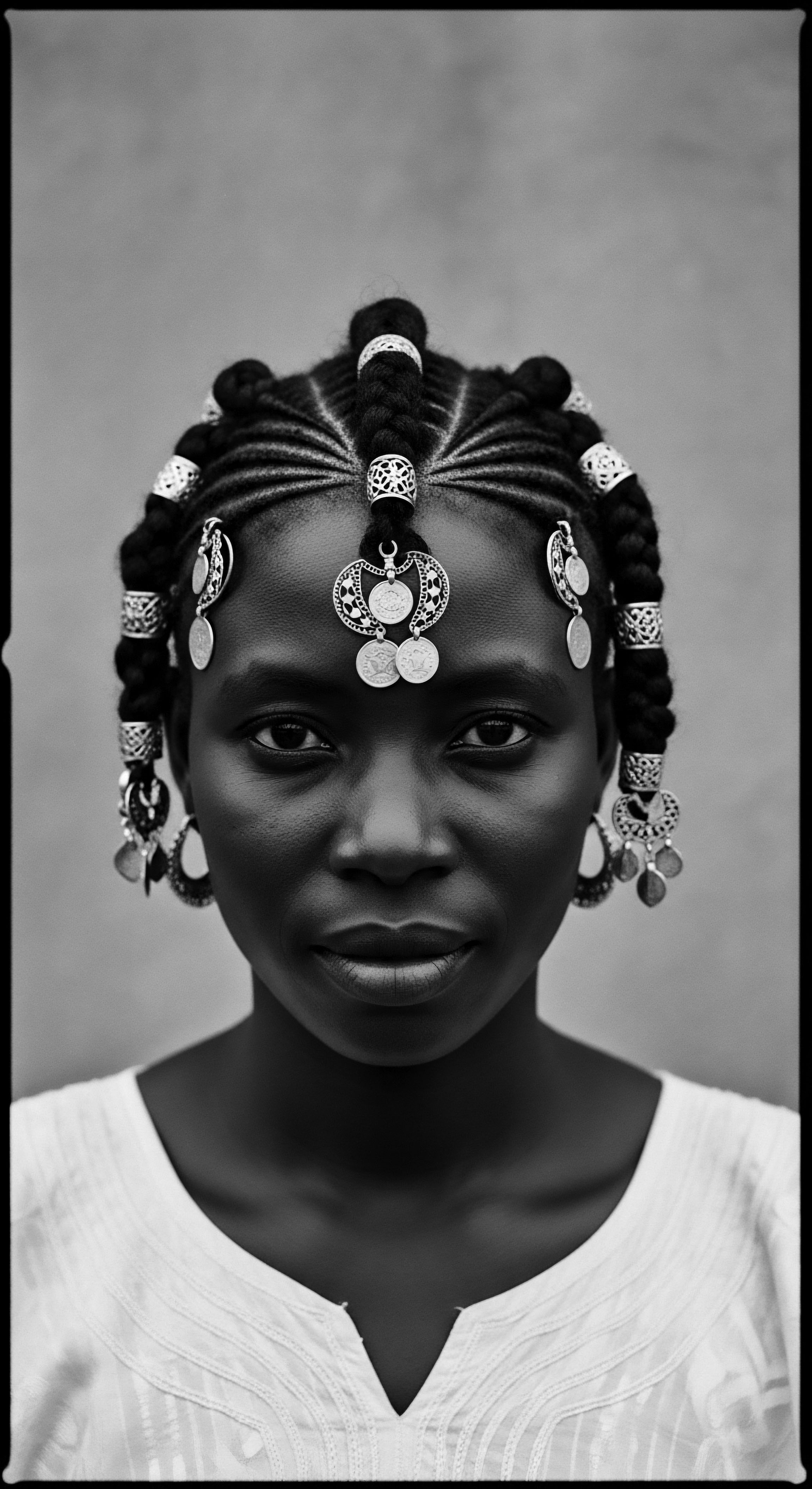
References
- Byrd, A. & Tharps, L. L. (2001). Hair Story ❉ Untangling the Roots of Black Hair in America. St. Martin’s Press.
- LaPointe, W. (2020). Honoring the Spiritual Legacy, Resiliency, & Healing Power of Our Ancestors Through Indigenous Customary Hair Traditions. Cultural Survival Quarterly, 44(3).
- Lasisi, S. et al. (2023). Hair Texture and Thermoregulation ❉ A Comparative Study. Journal of Human Evolution.
- Robbins, M. (2012). The Evolution of Human Hair Texture. University of California Press.
- Sherrow, V. (2023). Encyclopedia of Hair ❉ A Cultural History. Greenwood Press.
- Voeks, R. (2013). African Ethnobotany in the Americas. Springer Science+Business Media.
